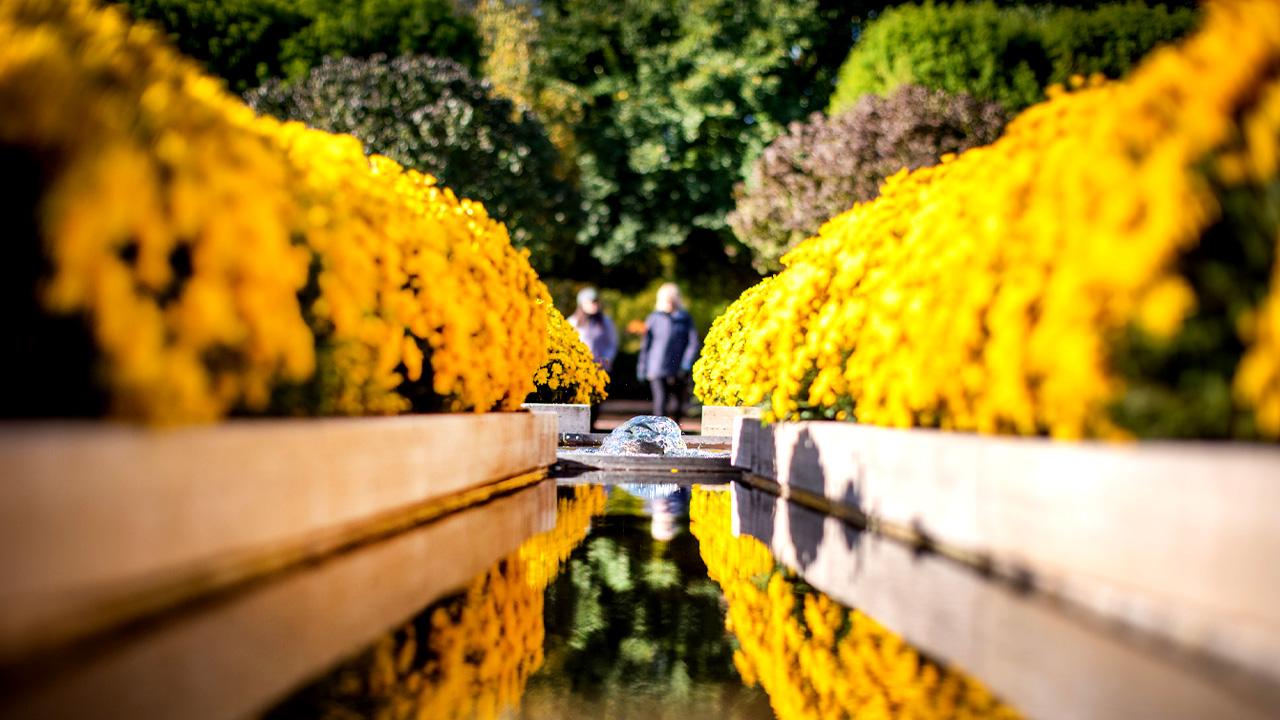Long-ago legend says that cranes can live for 1,000 years…and that folding 1,000 paper cranes, one for each year, can make a wish come true.
So it is that the crane is the symbol of longevity and good fortune.
Fast forward to the turn of the twenty-first century, when Ray Wilke, a devoted volunteer in the Elizabeth Hubert Malott Japanese Garden, decided to make origami cranes as a take-away gift for children who visited the garden’s Shoin House. Each winter, Ray and wife Ginny folded cranes…and each spring/summer Ray handed them out, one by one, to the curious children.
Over the years, Ray and Ginny made 40,000 cranes.
Now there are 10 people who fold, bringing in bags of 20, 60, or 100 origami cranes throughout the winter.
And 3,000-plus cranes are ready to hand out.

Happiness is 1,000 paper cranes…and volunteers like Susan and Edie.
From Ray’s original intent comes great good fortune: a community has sprung. And what do the kids think when they’re offered a crane? “They’re over the moon, they’re very gentle with them,” Mary says. “We say, ‘We’d like you to have one,’ and you’d think you were giving them gold when you explain why. It opens the door for conversations, especially with 7-, 8-, 9-year-olds.”
Cranes are offered, hand to hand, at the Shoin House whenever volunteers are present…for as long as the handmade supply lasts. (Although adults make wishes, too, cranes are for kids only.)

